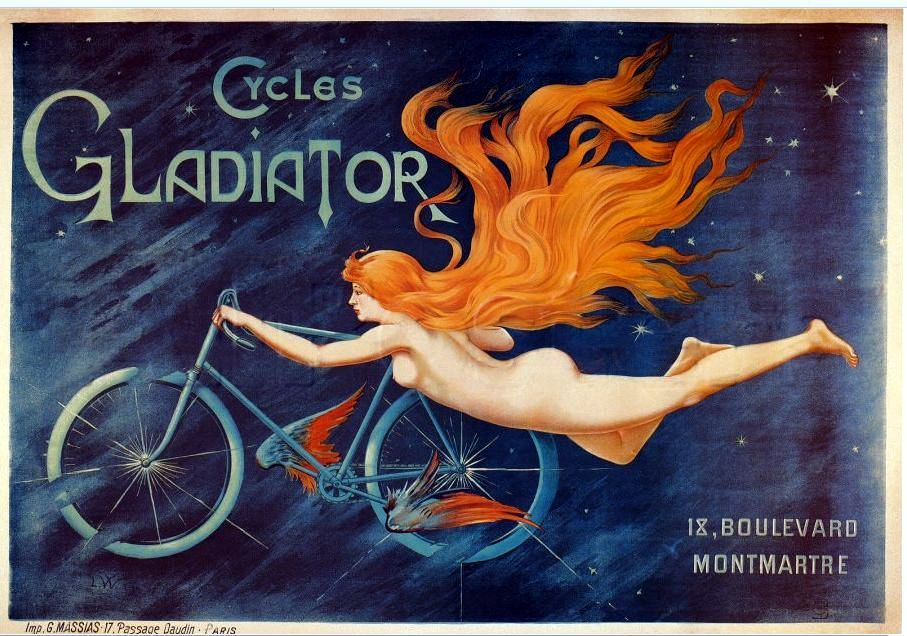In a world where the bicycle became a symbol of progress and emancipation, one poster stands out above all others. Cycles Gladiator, a masterpiece created by Georges Massias in 1902, didn’t just promote a bicycle brand – it became a manifesto of an entire era. Let’s discover the fascinating history of this exceptional piece of advertising art and its influence on turn-of-the-century culture.
Historical Context: Bicycle as a Symbol of Modernity
At the turn of the 19th and 20th centuries, the world was undergoing rapid transformation. Industrialization was changing urban landscapes, and new inventions were revolutionizing daily life. During this time, the bicycle became more than just a means of transport – it was a symbol of progress, freedom, and independence. It played an especially significant role in women’s emancipation, offering them unprecedented mobility and freedom.
The Gladiator Brand: Pioneer of Innovation
The Gladiator company stood out from its competitors through its innovative approach to bicycle production. Known for high quality and advanced technical solutions, it needed an equally innovative approach to advertising. This need led to the creation of one of the most recognizable advertising posters in history.
Artistic Analysis of the Poster: Composition and Dynamics
Georges Massias created a masterpiece in terms of composition. The central figure – an athletic, confident woman – emanates strength and grace. Her pose, with raised arm in a gesture of triumph, suggests movement and speed while expressing the joy of riding.
Symbolism and Message
Key elements of the poster:
- The female figure as a symbol of modernity and emancipation
- The flowing dress symbolizing harmony between nature and technology
- The dynamic pose emphasizing freedom and adventure
- The decorative frame giving the work an artistic character
Color Scheme and Style
Massias used a bold color palette dominated by:
- Intense red symbolizing energy and passion
- Warm yellows adding dynamism
- Contrasting tones emphasizing dramatic composition
Impact on Culture and Advertising
The Cycles Gladiator poster went far beyond its original advertising function. It became:
- A manifesto of modernity and progress
- A symbol of women’s emancipation
- An icon of advertising art
- An inspiration for future generations of artists
Legacy and Contemporary Significance
Today, over 120 years after its creation, the Cycles Gladiator poster remains a testament to a breakthrough period in history. Its influence is visible in:
- Contemporary design
- Retro and vintage style
- Collectibles
- Research on advertising and design history
Summary
The Cycles Gladiator poster is more than advertising – it’s a document of an era that defined modernity. Combining artistic craftsmanship with commercial messaging, Georges Massias created a timeless work that continues to inspire and delight. In the history of advertising and applied arts, it remains an example of perfect unity between form, content, and social significance.żytkowej pozostaje przykładem doskonałego połączenia formy, treści i społecznego znaczenia.



